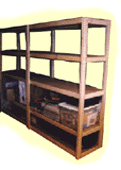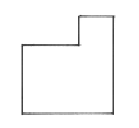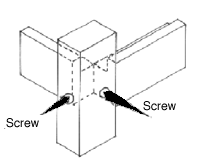 |
|
|
Storage Shelving

Functional storage shelving is one of the most often request projects from you, our readers. The need varies from somewhere to keep those bulk purchases in the basement to simple shelving for in the workshop. Our resulting project should accommodate either choice and leaves plenty of room for modification to suit your own particular requirements. More importantly, the project is very cheap as it uses standard 2-by-3's as the main framework. Although this is rough, construction-grade lumber, once sanded down it provides a perfectly adequate surface for painting or even varnishing.
Construction
Tools required: Jigsaw, sander, drill
Wood required:
| Description | Qty | Thickness | Length | Width |
| Main legs (2x3) | 6 | 1 1/2" | 72" | 2 1/2" |
| Front and back supports | 10 | 1 1/2" | 96" | 2 1/2" |
| Side supports | 10 | 1 1/2" | 15" | 2 1/2" |
| Shelves (plywood) | 5 | 1/2" | 18" | 98" |

The first step is to prepare the front, back and side supports. These pieces need to have a 1/2" deep slot routed out of them that is 1" wide (see diagram). The shelves will fit into these slots, thus giving a nice finishes look to the shelving rather than showing the edge of the plywood.
Once you have cut out all of the slots, it is time to construct the two side frameworks. To construct a side frame, take two of the leg supports and lay them flat on the floor so that the 2 1/2" width is showing. Then, attach the side supports (with the routed groove pointing up and inwards) by gluing and screwing through the 2 1/2" width (see diagram). Ideally, the side supports should be attached at even intervals (every 30"), but you can modify this to suit your own requirements. Repeat for the other side, taking care to ensure that the routed groove points towards the middle of the shelving unit. Take the time to ensure that all joints are square; otherwise you may end up with a shelving unit that leans!

Once the sides are complete (and the glue has dried) it is time to attach the front and back supports. Again, these are attached using glue and screws, and should match the heights of the side pieces. Once attached, the result should be a complete frame. To strengthen this frame, take one of the two remaining leg pieces and attach it in the middle of the front frame by simply gluing and screwing into the support pieces. This will stop the unit from sagging in the middle.
Take the shelving pieces (which should be cut to shape as mentioned in the wood list) and cut a small notch out of the corner of each one. This notch should be a 1" by 1" square and will allow the shelves to sit snuggly against the four corner legs. Now, place the shelves into place. To do this, slide them in from the back (the front central leg makes it impossible from the front).
Once all shelves are in place, and everything looks okay, attach the final leg to the center of the back frame (thus matching the front one). Sand the unit thoroughly and paint if so desired.